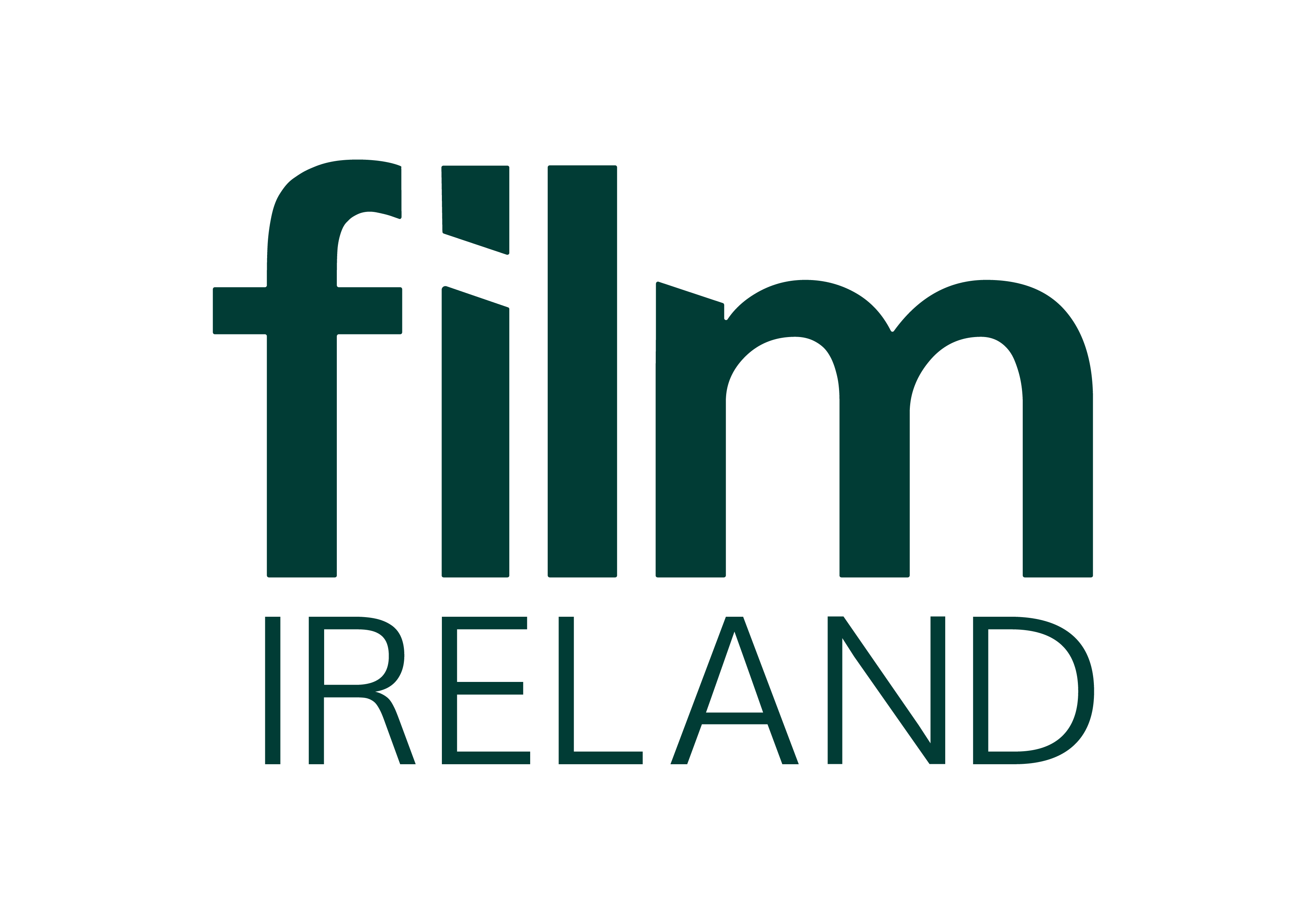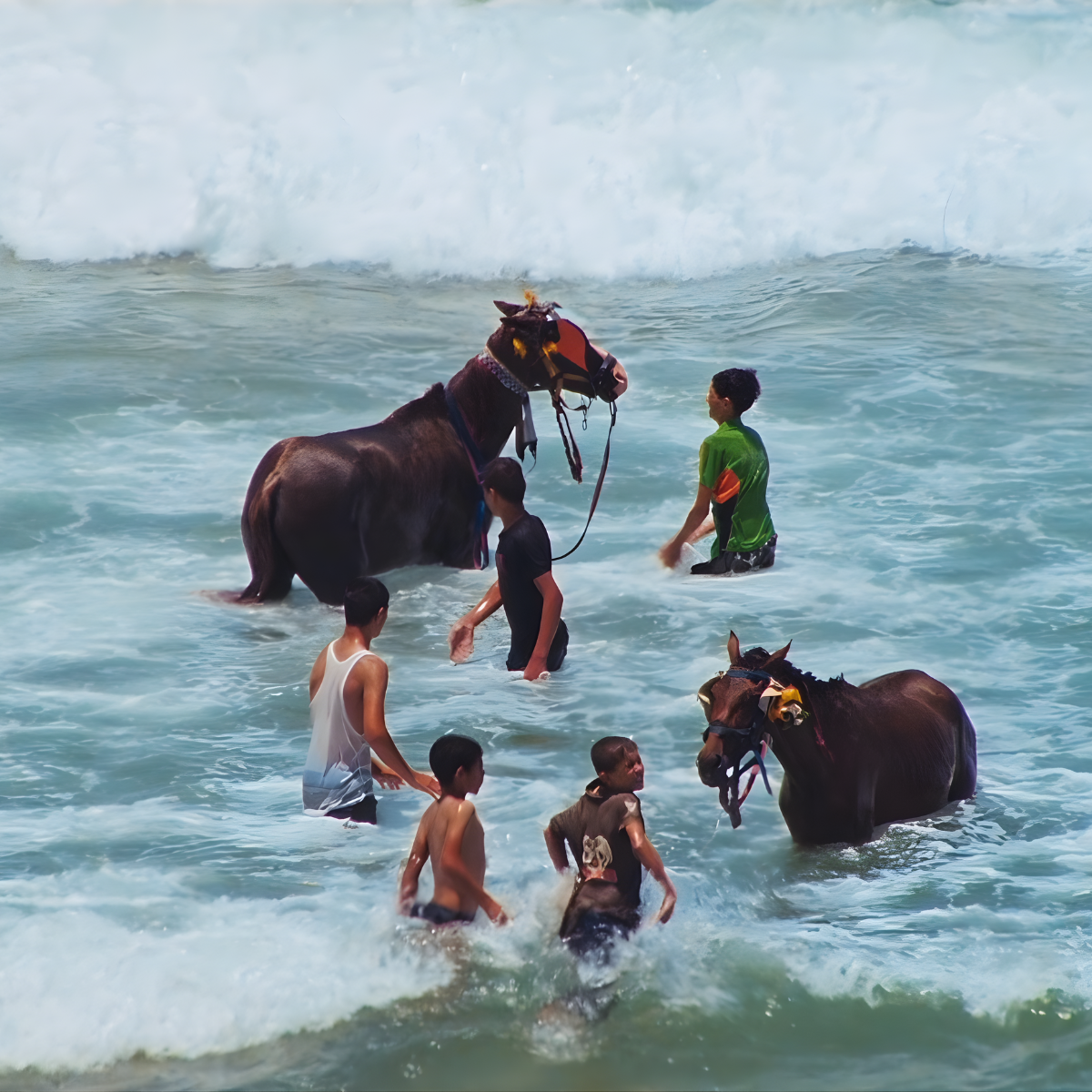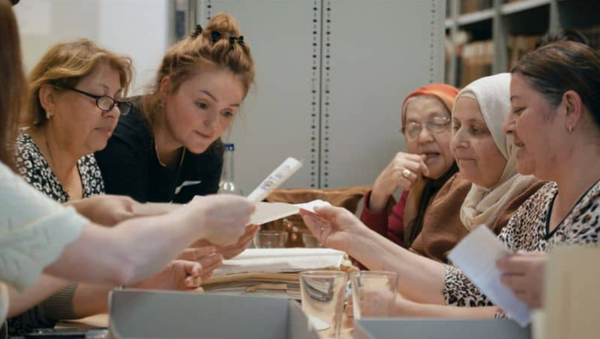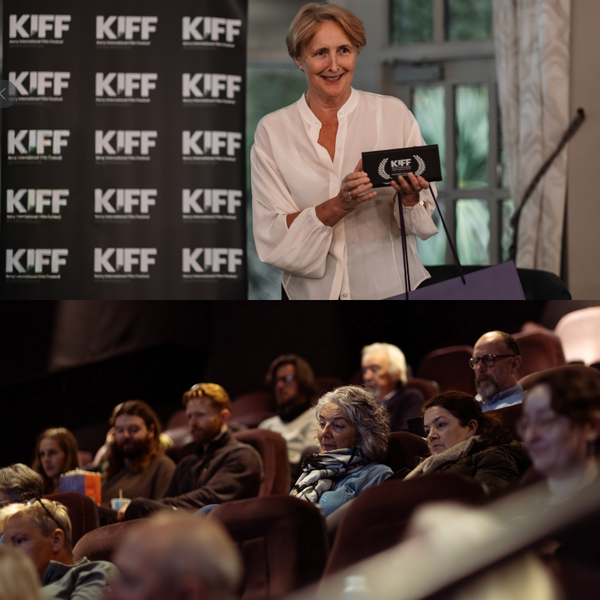Neil Cadieux speaks out with his review of AEMI programme Our Tongues in Exile.
With Our Tongues in Exile, Artists and Experimental Moving Image (AEMI) has assembled a collection of films focused on the fluidity of artificial and man-made borders within moving image. Curated by Media City Film Festival’s Artistic Director, Oona Mosna, the line-up collates images and ideas with a worldwide scope. From the mundanity of inner-city Buenos Aires to images of now-absent Palestinian domesticity, the location of each piece is shared and synchronised within its own disambiguation of place and time.
Manzanas
The showcase opens with Narcisa Hirsch’s Manzanas, an Argentinian film from 1969. In the short, a camera crew distributes apples, free of charge, to jovial and confused passers-by. The project was shot in Buenos Aires during an era controlled with rigorous censorship and dominated by dictatorship. Courageously, Hirsch shoots this time period with handheld cinéma-vérité inspired profiles of subjects and urban exteriors. This approach makes for a pleasant and inspired application of guerrilla documentary filmmaking. The confused responses to the free fruit are equally entertaining. In a quietly revealing moment, multiple subjects ask if Hirsch’s harmless experiment is the covert actions of a government body.
Atlantique
Shifting to Dakar in Senegal for the second film in the sequence, Mati Diop’s 2009 documentary short Atlantique details three Senegalese friends who attempt a life-threatening border crossing. The film presents Senegalese waters as a physically fluid setting that embodies the uncertainty and danger associated with immigration. This is displayed through the location’s hazy, black-and-blue colour scheme. Here, darkness and borders remain almost unchallenged, disturbed only by an occasional ray of light. Diop’s presentation of the artwork's actual subjects is equally uplifting and tragic. Through dialogue and physical performance, it becomes clear that the three-man cast survives largely on gallows humour and a yearning for life itself. Needless to say, Atlantique strikes a devastating emotional chord.
The Newest Olds
Pablo Mazzolo’s 2023 short film examines the physical and ethereal border between Canada and the United States. Taking place within the Windsor-Detroit borderlands, the project showcases the area’s temporality both sonically and visually. Shattered voices, music and ambient sound are paired with steadfast and still images of urban decay. Glimpses of steel plants and small skylines twinge the border area and envelop it with a tangible otherness. The artwork’s muted musings on modern history and political geography are thoroughly engaging. In a Q&A hosted after the screening, host Jeremy Rigsby of Media City Film noted that the film was named after a billboard Mazzolo saw in Windsor. This artefact, a used car dealership advertisment entitled The Newest Olds, succinctly accentuates Mazzolo’s murky exploration of contemporaneity.
Speaking in Tongues: Take One
The next film in the list was 2024’s Speaking in Tongues: Take One. Directed by Christopher Harris, the work chronicles time, space and pop culture through an African American perspective. The film takes an explicitly visual approach to its historiography. This stylistic mode allows for Harris’s political and historical statements to exist within visual rhymes and motifs, all of which ooze with sincerity. Expertly assembled and staggering in its wealth of ideas, the collation of 16-millimetre archival footage stuns with each shot.
Electrical Gaza
Rosalind Nashashibi’s 2015 film is comprised of footage of Gaza in the early 2010s and 2D animated sequences. The piece is undeniably powerful. Nashashibi’s film describes and illustrates Gaza as a mythological location, isolated and suspended from the normality of time and space. The film’s 2D animated sections contain images of children, sand and walls, resembling a cartoon fairytale. These sections affirm a disquieting, hypnotic portrayal of Palestinian identity and geography. Nashashibi’s choice to contrast this animation against digitised tapes of Palestinian homemaking made for a visual-textual narrative. In the scheduled Q&A, Jeremy Rigsby quoted Nashashibi on contemporary life in Gaza. She stated that none of the real-life environments displayed in the film exist anymore. The subsequent murmurs from audience members spoke volumes.
Lunar Almanac
A 2013 short from Canadian Chilean director Malena Szlam, ended the screening. Shot on 16-millimetre Ektachrome, the three-minute project showcases layerings of single-frame, long exposures of the moon. Brief and to the point, the work is technically impressive and beautiful to behold. Ending with this blank portrayal of land, where no physical border or man-made entrapment defines nationality or place, was inspired and appropriate.
This programme screened on 27th September 2025 in The Complex, Dublin.







